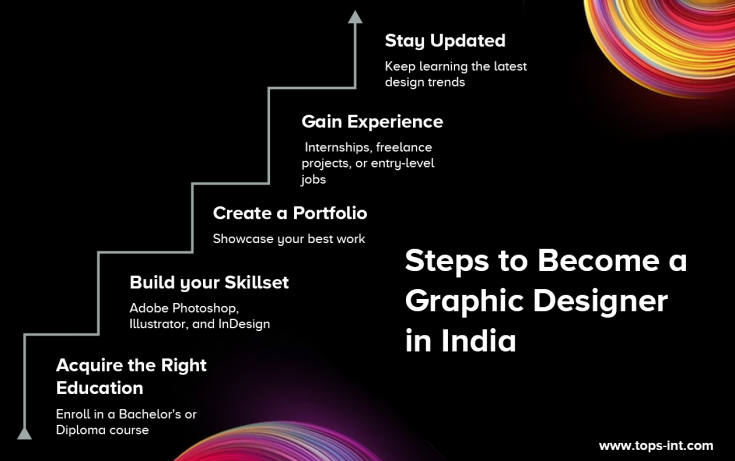How a B.Des. Degree can Launch You into the World of Fashion, UX & More

Blog / April 03, 2025
B.Des. Course DetailsB.Des. Course + ScopeB.Des. Eligibility, Fees, and moreDesign is everywhere—from the sleek interface of your smartphone to the ergonomic chair you sit on and the stylish outfit you wear. Every object, space, and experience is shaped by creativity, aesthetics, and functionality. The art of design has evolved significantly over the years, transitioning from traditional craftsmanship to technology-driven innovation. What once relied solely on artistic instincts now integrates user experience, sustainability, and digital advancements.
The evolution of our surroundings makes educational design structures more vital than ever. Through the B.Des. (Bachelor of Design) course, you learn to unite artistic conceptualization with technological comprehension to develop sustainable results that combine beauty with functionality. Graduates of this degree use the foundational learning to create innovative products in diverse business areas, from user interface development and novel fashion designs to sustainable product development.

Source: https://www.tops-int.com/
Table of Contents
- What is B.Des.?
- Why Choose B.Des.?
- Skills Required for B.Des. Course
- What are the Top Specializations in B.Des?
- B.Des. Course Eligibility
- B.Des. Course Fees
- Career after B.Des. Course
- B.Des. Salary in India
- Shape Tomorrow's Creative World with a B.Des. @ Shiv Nadar University
- To Wrap it Up
- FAQs
What is B.Des.? Where Art Meets Functionality
Undergraduate students enrolled in the B.Des. course gain four years of specialized training to develop their design skills through luxury creative education and technical expertise. The program combines problem-solving activities, aesthetic practice and design experience delivery from a user-focused approach. Design education continually develops by integrating technology with sustainability to become an integral aspect of different industries, which include fashion design, interior design, product design and communication design.
Why Choose B.Des.? For Those Who Think Outside the Box
A B.Des. course establishes diverse professional prospects in different sectors by uniting creative perspectives with functional implementation. The educational program builds creative thinking through practical work while connecting you to current industrial developments. The selection of this course provides you with the following benefits:
- Explore diverse career paths in creative industries.
- Develop critical thinking and problem-solving abilities.
- Gain expertise in emerging design technologies and tools.
- Work with professionals and industry leaders through internships and live projects.
Skills Required for B.Des. Course
Graduation success in the B.Des. course requires you to develop technical skills, creative abilities and analytical competencies. Some essential skills include:
- Creativity & Imagination
- Attention to Detail
- Technical Knowledge
- Problem-Solving Abilities
- Communication Skills
- Time Management
What are the Top Specializations in B.Des.?
The B.Des. course presents you with various speciality fields which align with diverse industry requirements and personal areas of interest. Top specializations within the B.Des. course include:
- Fashion Design
- Graphic Design
- Interior & Furniture Design
- Product Design
- Textile Design
- Animation & Multimedia Design
- Industrial Design
B.Des. Course Eligibility: Who Can Apply?
B.Des. course eligibility requires you to meet certain criteria, which may vary by institution. The general requirements include:
- Completion of 10+2 or equivalent education from a recognized board.
- A minimum aggregate percentage (varies between institutions, typically 50% or above).
- Qualifying scores in design entrance exams such as UCEED, SNUSAT, NIersity-specific tests.
- Some universities may require a portfolio submission showcasing the candidate's creative work.
Course Fees: What Does a B.Des. Cost?
The B.Des. course fees vary based on the institution, location, and specialization. On average:
- Government colleges charge between INR 1-3 lakhs per year.
- Private universities may have fees ranging from INR 3-10 lakhs per year.
- Scholarships and financial aid options are available for meritorious students.
Creativity Pays Off: Top Career Choices after B.Des.
Graduates of the B.Des. course can explore diverse career paths, depending on their specialization and interests. Some of the top career opportunities after B.Des. include:
|
|
|
|
|
|
|
|
|
|
|
|
|
|
|
|
|
|
Earnings after B.Des.: Salary Trends in the Design Industry
The salary after completing a B.Des. course depends on specialization, skills, and industry demand. The average salary ranges are:
- Entry-level: INR 3-6 LPA
- Mid-level: INR 6-12 LPA
- Senior-level: INR 12-20 LPA or higher
UI/UX Designers, Fashion Designers, and Industrial Designers often receive higher packages in top companies.
Shape Tomorrow's Creative World with a B.Des. @ Shiv Nadar University (Institution of Eminence)
The School of Humanities and Social Sciences offers a Bachelor of Design (B. Des.) program at Shiv Nadar University. Through a 4-year period, the program aims to generate fast-tracked, solution-oriented individuals who embody innovation. It prepares you for design practice in the industry, where you can take multiple roles while excelling in a single domain.
Key Highlights of the Program:
- Focus on Human-Centered Design
- Future-Oriented Curriculum
- Integration of 3DEXPERIENCE platform from Dassault Systèmes
- Choice-based Streaming and Specialisation Options
- Vibrant and Multidisciplinary Ecosystem
B.Des. Specializations Offered at Shiv Nadar University
- Experience Design (UX/UI)
- Product – System Design
- Visual Communication Design
Additionally, the courses are structured into modules, providing the flexibility of learning from more than one faculty member. Hands-on exercises, studio-based activities, case studies, seminars, industrial visits, guest lectures, etc., are immersed into most courses to facilitate experiential and practice-based learning.
To Wrap it Up
Students who choose the B.Des. course enter the dynamic world of design, transforming their creative ideas into impactful innovations. Design education expands creative job opportunities, leading to professional development. To succeed in the field, you should choose a reputable university like Shiv Nadar University, refine your specialized skills, and focus on your areas of interest. Apply now and gain industry-relevant skills, hands-on experience, and expert mentorship to turn your creativity into a lucrative profession.
FAQs
1. What is the eligibility criteria for a B.Des. course?
Students who want to study B.Des. must pass their 10+2 degree from a recognized institution while achieving at least 50% marks (institution-specific). You need to meet entrance exam requirements through UCEED, NID DAT or NIFT qualifications as well as present their portfolio for some institutions.
2. What is the average salary after a B.Des. course in India?
Salaries in this field depend on both professional expertise and the chosen area of specialization. Newly graduated designers earn at least ₹3 LPA but can start at ₹6 LPA, while those in between their careers earn ₹6-12 LPA and highly experienced designers make ₹12 to 20 LPA or more. Insightful UI/UX Designers, Industrial Designers and Fashion Designers typically get higher compensation packages.
3. How much does a B.Des. course cost in India?
The B.Des. program costs differ from one institution to another. Students at government colleges need to pay between ₹1-3 lakhs yearly, whereas private universities require a payment between ₹3-10 lakhs annually. Qualified candidates can find scholarships as well as financial aid when they seek admission to the program.